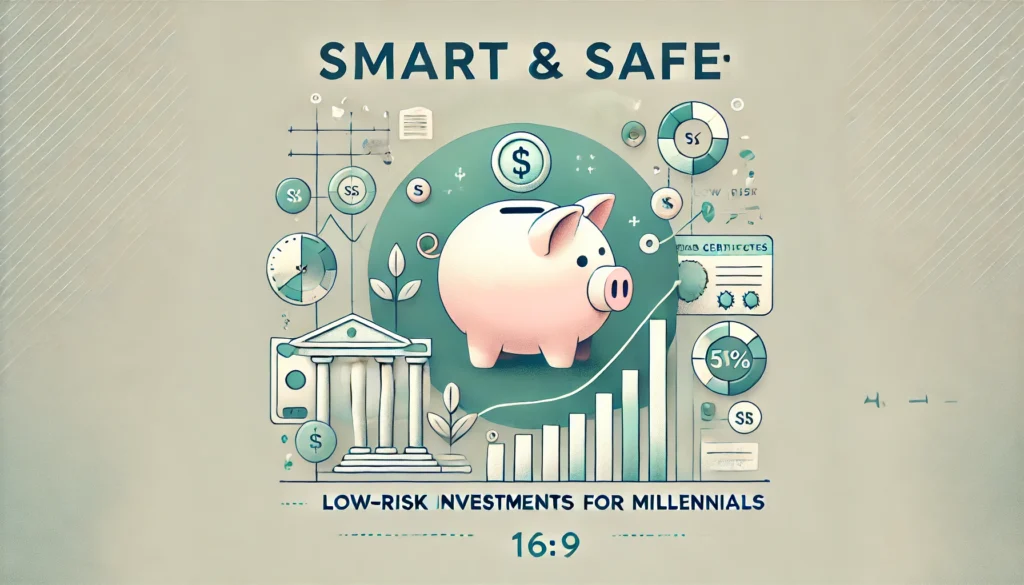Why 2025 Is a Crucial Year for Stock Market Investing
The world of stock market investing is evolving at a rapid pace, and if you’re new to investing, there’s no better time to start than now. By 2025, ongoing technological advancements, shifting global economies, and post-pandemic market recoveries are expected to create a fresh wave of opportunities for investors across the globe. From new financial regulations to the rise of green energy stocks, the marketplace is brimming with potential for those who know how to capitalize on it.
For many beginners, the stock market can seem like an intimidating space filled with risk, jargon, and uncertainty. But with the right long-term investing strategies and a solid understanding of basic principles, you can set yourself up for future financial success. In this comprehensive guide, we’ll break down the fundamentals of how to invest in stocks, explore why 2025 may be an optimal period for new investors, and offer actionable tips that you can implement right away—no matter your starting budget.
Section 1: The Basics of Stock Market Investing
1.1 What Are Stocks?
At its simplest, a stock represents a share of ownership in a company. When you purchase a share, you become a shareholder, which means you’re entitled to a portion of that company’s earnings and assets. The stock’s price in the market fluctuates based on various factors, including supply and demand, investor sentiment, and the company’s overall performance.
- Common stocks: Give shareholders voting rights and often pay dividends, though not guaranteed.
- Preferred stocks: Typically do not offer voting rights but come with fixed dividend payments and have priority over common stocks for dividends.
1.2 Why Invest in Stocks?
Over the long term, stocks have historically outperformed many other asset classes, such as bonds or savings accounts. According to data from global financial institutions, the average annual return of the U.S. stock market has hovered around 7%–10% (adjusted for inflation) over the past century. While investing for beginners can feel intimidating, understanding that market fluctuations are normal—and that time in the market is often more important than timing the market—can help you build wealth consistently over the years.
1.3 The 2025 Landscape for Beginners
So why is investing in 2025 particularly compelling? Several factors suggest that new investors could find significant entry points and growth opportunities in the coming years:
- Technological innovations: Advances in fintech, artificial intelligence, and blockchain are poised to reshape industries—and create investment opportunities that didn’t exist a few years ago.
- Sustainable investing: Growing interest in environmentally conscious companies and renewable energy sources means ESG (Environmental, Social, and Governance) investing will likely play a larger role in portfolios.
- Global market expansions: Emerging markets in Asia, Latin America, and Africa continue to grow, offering new avenues for diversification.
By starting your stock market journey now, you position yourself to take advantage of these trends as they gain momentum.
Section 2: Setting Up the Foundation for Investing
2.1 Establish Financial Goals and Timeline
Before purchasing your first share, clarify your financial objectives:
- Short-term goals: If you need the money within 2–3 years (e.g., saving for a house), you might be better off with more stable options like high-yield savings accounts or short-term bonds.
- Long-term goals: If retirement is 20–30 years away, you may have more tolerance for market volatility, focusing on growth-oriented stocks or index funds.
Defining clear goals and a timeline will shape your investment strategy and help you choose the right stocks or funds.
2.2 Build an Emergency Fund
The golden rule for beginners is simple: only invest money you can afford to set aside for the long term. Having a robust emergency fund—typically 3–6 months’ worth of living expenses—ensures that you won’t need to liquidate investments prematurely for unexpected bills. This buffer is crucial for remaining calm during market downturns and helps protect your portfolio from forced selling at unfavorable times.
2.3 Understand Your Risk Tolerance
Risk tolerance refers to how much fluctuation (or potential loss) you can handle in your investments without panicking. Some people can stomach large ups and downs in pursuit of higher returns, while others prefer more stable, conservative growth. Tools like online risk assessments or consultations with a financial advisor can help you gauge which types of stocks are most suitable for you.
Section 3: How to Start Investing in 2025
3.1 Choose the Right Investment Platform
With the rise of fintech, investors now have a wide variety of platforms to choose from:
- Online Brokerages: Examples include Fidelity, Charles Schwab, and E*TRADE. These platforms offer robust tools and research data.
- Robo-Advisors: Ideal for hands-off investors, robo-advisors like Betterment or Wealthfront use algorithms to create and manage a diversified portfolio based on your risk profile.
- Micro-Investing Apps: Perfect for those starting with smaller amounts, apps like Acorns or Stash let you invest “spare change” and automate contributions.
When selecting a platform, consider fees (trading commissions, management fees), user experience, and available investment options.
3.2 Understand Different Investment Vehicles
- Individual Stocks: Offers potential for high returns but carries more risk, as your performance depends heavily on the success of a single company.
- Mutual Funds and ETFs (Exchange-Traded Funds): Pool money from multiple investors to buy a basket of stocks. Often considered less risky than individual stocks due to built-in diversification.
- Index Funds: A type of mutual fund or ETF designed to track a market index (e.g., the S&P 500). Known for lower fees and stable performance over the long term.
- Sector Funds: Focus on specific industries, such as technology, healthcare, or energy. Useful for targeted exposure but can be riskier if the sector underperforms.
3.3 The Power of Dollar-Cost Averaging
A popular strategy for stock market investing is dollar-cost averaging (DCA), where you invest a fixed amount of money into the market at regular intervals, regardless of stock prices. This approach helps mitigate the impact of market volatility, as you buy more shares when prices are low and fewer shares when prices are high. Over time, DCA can lower your average cost per share, promoting steady growth in your portfolio.
Section 4: Building a Diversified Portfolio
4.1 Benefits of Diversification
Diversification involves spreading your investments across various asset classes, sectors, and regions to reduce risk. No single investment will dictate your overall performance, lowering the impact of any one stock or industry downturn.
- Equities (Stocks): Domestic and international, large-cap and small-cap.
- Fixed Income (Bonds): Government bonds, corporate bonds.
- Real Assets: Real estate investment trusts (REITs), commodities like gold.
- Alternative Investments: Cryptocurrencies or private equity (for more advanced investors).
4.2 How Many Stocks Should You Own?
There’s no “one-size-fits-all” answer, but many experts recommend owning at least 15–20 stocks across different industries to help cushion against market volatility. If you’re investing through funds, diversification is often automatically built in.
4.3 Balancing Growth and Value Stocks
- Growth Stocks: Companies expected to grow revenues and earnings faster than the market average. Often found in technology or emerging sectors.
- Value Stocks: Companies that trade at a lower price relative to their fundamentals, such as earnings, dividends, or book value. Potential for steady returns with lower risk.
Combining both growth and value stocks—or using balanced ETFs—can help you create a more resilient portfolio.
Section 5: Managing Risk and Emotions
5.1 The Importance of a Long-Term Mindset
The stock market can be a wild ride, with daily price swings that can make even seasoned investors uneasy. A key principle for investing in 2025—and any other year—is maintaining a long-term perspective. Historically, markets tend to rebound from dips and corrections, although timing this rebound perfectly is nearly impossible. Patience and consistency often yield better results than emotionally driven decisions.
5.2 Avoid Timing the Market
Research consistently shows that missing the best days in the market can drastically reduce your overall returns. Instead of attempting to buy low and sell high based on market predictions, aim to invest regularly and hold for the long haul. If you must adjust your strategy, consider rebalancing your portfolio annually or semi-annually.
5.3 Dealing with Market Volatility
- Stay informed, but don’t obsess: Monitoring your portfolio is essential, but checking prices multiple times a day can lead to emotional decisions.
- Review your goals: If you have a clear plan and timeline, short-term fluctuations become less alarming.
- Have an exit strategy: Decide on triggers for selling—such as fundamental changes in a company or achieving a specific financial milestone.
Section 6: Stock Market Trends to Watch in 2025
6.1 Growth of Tech-Driven Sectors
Technological innovation is likely to continue driving market growth. Sectors like artificial intelligence, quantum computing, and robotics may see surging demand, making them attractive for long-term investors. However, these sectors can experience heightened volatility due to rapid changes in technology and consumer preferences.
6.2 Rise of Sustainable and ESG Investing
As more individuals and institutions aim to invest responsibly, ESG (Environmental, Social, and Governance) funds have gained enormous popularity. Companies that prioritize sustainable practices and social responsibility could experience better returns, thanks to growing consumer and investor support. Keeping an eye on ESG-focused ETFs or stocks that score high on ESG metrics can be a strategic move in 2025.
6.3 Emerging Markets Momentum
Countries like India, Indonesia, and several African nations continue to display promising growth. While investing in emerging markets can offer higher potential returns, it also comes with greater risk. Look for emerging market ETFs that provide diversified exposure while mitigating the risk of individual-country downturns.
Section 7: Real-Life Example of a 2025 Beginner Investor
Let’s meet Sam, a 30-year-old graphic designer who decides to start stock market investing in 2025. Here’s how Sam goes about it:
- Financial Check-Up: Sam calculates monthly expenses and builds a 4-month emergency fund.
- Goal Setting: Sam aims to grow wealth for retirement, targeting a 30-year investment horizon.
- Platform Selection: After comparing fees and features, Sam chooses a robo-advisor for simplicity.
- Diversification: The robo-advisor automatically invests Sam’s monthly contributions in U.S. stocks, international stocks, and a small percentage of bonds.
- Staying Consistent: Sam contributes 10% of each paycheck using a dollar-cost averaging strategy, avoiding the temptation to “time” the market.
- Ongoing Learning: Sam regularly reads financial articles, checks in with the robo-advisor’s performance reviews, and occasionally adjusts the portfolio if necessary.
After a few years, Sam sees portfolio growth that outperforms a standard savings account, reinforcing the discipline to continue investing.
Conclusion: Your Path to a Strong Financial Future
Investing for beginners can be both exciting and intimidating, especially in an ever-evolving marketplace like 2025. However, by understanding the fundamentals of how to invest in stocks, setting clear financial goals, diversifying your portfolio, and maintaining a long-term perspective, you lay a strong foundation for wealth-building.
Remember, the key to successful stock market investing is consistency—both in contribution and in learning. Markets will ebb and flow, but your commitment to a disciplined strategy can help you stay the course and reach your financial milestones. As you move forward:
- Finalize your financial plan and set specific goals.
- Choose a reputable investment platform that aligns with your needs.
- Start small if necessary, but aim to contribute regularly.
- Monitor your portfolio and rebalance when needed to stay aligned with your risk tolerance.
- Continue learning about emerging trends, from tech breakthroughs to ESG investments.
Ready to embark on your investing journey? Start by calculating your risk tolerance and setting up a robo-advisor or brokerage account today. You’ll be one step closer to securing your financial future in 2025 and beyond.
By applying the principles outlined in this beginner’s guide, you can navigate the ever-changing landscape of stock market investing with confidence and poise. Here’s to building a brighter, more financially secure future!



